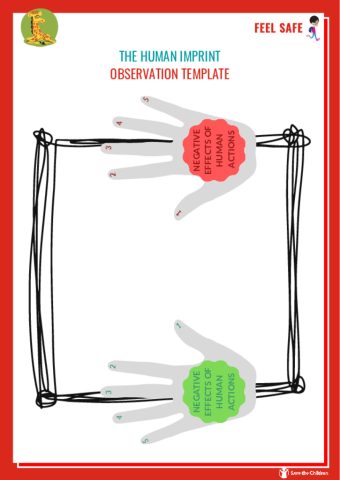The human imprint
Objectives:
- Get to know the concept of landscape
- Understand the effects of human action on the territory
- Stimulate creativity
STEP BY STEP
BEFORE STARTING
The teacher introduces the concept of landscape (the definition in the glossary can be used):
Landscape: part of the territory, as perceived by populations, whose features derive from the action of natural and/or human factors and their interrelationships.
THE EFFECTS OF TRANSFORMATION
The teacher asks the class the following questions: "Why do humans transform the environment? Does the transformation have positive or negative consequences for the environment? And for the human being?"
After a brief discussion with the class, the teacher explains that human beings can transform the landscape by modifying or eliminating certain natural or constructed elements in order to exploit it.
A transformation can have both positive and negative effects for both the human being and the environment. For example, the cutting of trees (if controlled and planned) is positive for the forest because it limits the possibility of a fire spreading, but it is negative because there would be a lack of tree roots capable of retaining water in the event of heavy rain and preventing the ground from collapsing. Human action, therefore, can amplify the negative effects of a natural phenomenon (such as rain) on the landscape and turn a hazard into a disaster.
THE CHANGE AROUND US
3. Change around us. At this point the teacher introduces the activity that will be carried out at home. Each boy and girl is to draw their hands on a sheet of paper, leaving a blank space in the middle. As an alternative, the teacher can use the attachment "The human imprint - Observation template (below). Each children should then observe the landscape they see from their room and reproduce it on a sheet of paper in the empty space left between their hands (you can decide to draw the observed landscape or take a photo). Within the landscape, identify 5 elements that characterise the landscape by circling them or highlighting them as you prefer.
Once the 5 elements have been identified, the two hands should be filled in: on each finger of one hand the positive effects for nature and man of each of the 5 identified elements should be written, while in the other hand the negative effects should be written on each finger.
Each finger should be associated with the same element identified in the landscape (e.g. the thumb of both hands will correspond to the road, the index finger will correspond to the neighbour's house, etc.).
At the end of the assignment, the contents of the landscapes and handprints are shared with the class, reflecting on how the observed landscape (is it industrial, rural, urban?) and on possible actions that could be taken to limit the negative effects of the identified elements (can they be modified? can they be removed?).
CONCLUDING THOUGHTS
How is the human being modifying the different landscapes of the earth? The teacher can show the images available on the NASA website (link) to make the class reflect on the effects that man can cause on the environment and on possible safeguarding actions that can be put in place for each of the environments shown.
Alternatively, an exhibition could be organised at school to display the work done and raise awareness of the impact of human beings on the landscape and nature.

Add new comment